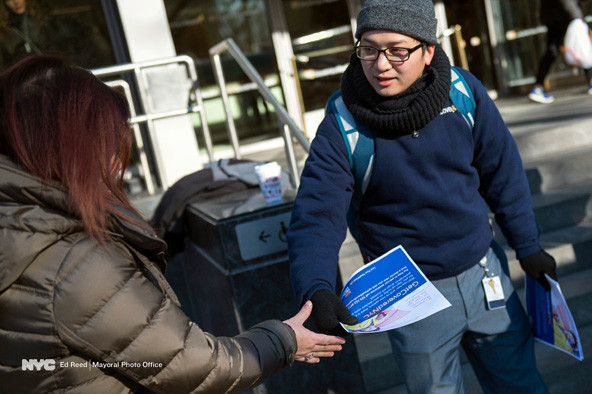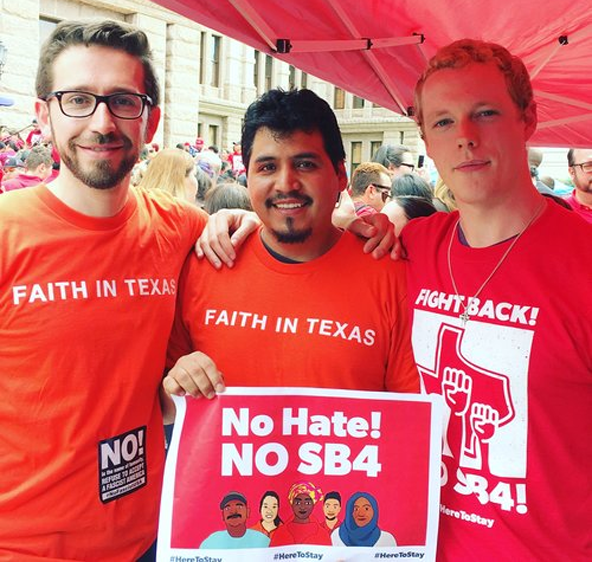How can civic engagement be effective in fostering an accountable, inclusive, and responsive American democracy? This question has gained new relevance under the Trump administration, where a sense of escalating democratic crises risks obscuring any nascent grassroots activism. Since the 2016 election, the twin problems of authoritarianism and insufficient political accountability have attracted much attention, as has the need to mobilize for near-future elections. These things are critical for the long-term health of American democracy, but at the same time, it’s not enough to focus solely on Washington or to rely on electoral campaigns to salvage our democracy.
Conventional civic-engagement activities such as canvassing, registering voters, signing petitions, and voting are largely transient experiences, offering little opportunity for civic participation once the election is over. And such tactics often do little to address the background conditions that make participation more difficult for marginalized communities.
To address these issues, civil society organization and local governments should build more long-term and durable democratic infrastructure, with the aim of empowering constituencies to participate in meaningful and concrete ways, overcoming division within our societies, and addressing a general distrust of government by enhancing accountability.
In our work with groups like the Center for Rural Strategies in Appalachia and the Chicago-based Inner-City Muslim Action Network, as well as with local government officials in Eau Claire, Wis. and Boston, Mass., we identify two areas where can help build a broader democratic infrastructure for the long haul. First, we need to support and radically expand efforts by local-level government officials to innovate more participatory and accountable forms of policymaking. And then we need to continue developing new methods of diverse, cross-constituency organizing that can help build more inclusive identities and narratives. Achieving this more-robust form of democracy will require that many different communities—including organizers and advocacy groups, policymakers and public officials, technologists, and funders—combine their efforts.
Developing more participatory and inclusive policymaking processes
Are you enjoying this article? Read more like this, plus SSIR's full archive of content, when you subscribe.
For many marginalized communities, the day-to-day operations of government are opaque, unaccountable, and unresponsive. And for many government officials, the demands of public service, particularly in the face of ever-decreasing resources and budgets, is daunting enough without having to face new mandates for transparency. Yet some of the most promising areas of governance reform lie in new institutions that effectively fuse public participation with effective city policymaking.
 New York's Public Engagement Unit gets the word out to help New Yorkers enroll in health care. (Image courtesy of Public Engagement Unit)
New York's Public Engagement Unit gets the word out to help New Yorkers enroll in health care. (Image courtesy of Public Engagement Unit)
One way to increase public participation is by investing in governmental infrastructure that can help engage residents while also holding the government itself accountable. New York City’s Public Engagement Unit (PEU), the first agency of its kind, is working to promote relationships between city and resident by meeting residents where they are. PEU, which launched in 2015, uses traditional grassroots tactics to find vulnerable residents and helps them connect with city programs, before they need to use expensive emergency government resources. In addition to maintaining a presence at community events and offering hotlines through other city offices, PEU outreach specialists connect people at risk of eviction with free legal assistance, sign tenants up for rental subsidies, and enroll those eligible for affordable health care. PEU also works across agencies to build capacity among outreach teams, and is implementing new outreach tools, technology, and best practices to integrate an accessible door-to-door community engagement approach throughout the city. These tools—such as iPads for intake, “tele” town halls, and proprietary case-management tools—support strong partnerships across city agencies to help maximize outreach on a wide range of issues, engage more New Yorkers, and add new capacity in case of emergencies.
Block-walking and canvassing are nothing new in the campaign space, but it is uncommon for governments to take such proactive approaches themselves. Leveraging the tools of a campaign for urban governance enables PEU to work across agencies to effectively resolve individual cases and effectively help communities. With its outreach model, PEU is enrolling constituents in city services while creating a more personal interface through which residents engage with government. By knocking on people’s doors and calling hard-to-reach constituents to enroll them in city services, PEU fosters long-term individual relationships with city staff and rebuilds trust between residents and their city, one constituent at time.
New models of cross-coalition organizing
A healthy democracy also requires on-the-ground community organizing to empower individuals and communities, enabling them to engage in advocacy and policymaking. At a time when civic engagement and political discourse has become increasingly polarized, community organizing is critical in creating new forms of shared identity, conversation, and solidarity.
 The work of Faith in Texas, in action. (Image courtesy of Faith in Action)
The work of Faith in Texas, in action. (Image courtesy of Faith in Action)
Take, for example, the work of Lydia Bean, executive director of the Dallas-based Faith in Texas. Faith in Texas is a grassroots, multiracial, and multi-faith community organization that works on developing civic leadership in deep-red Texas. Bean’s book, The Politics of Evangelical Identity, documents how political conservatives have reshaped what it means to be an evangelical Christian within everyday religious practice. Faith in Texas approaches its mission by embracing elements of local community identity, in the hope of building novel coalitions and opening up new political possibilities. In Texas, this means not being afraid to organize social movements around religion, even where some progressive groups might otherwise avoid engaging in such potentially thorny conversations.
Faith in Texas focuses on social justice issues like immigration and predatory payday lending with multi-faith coalitions that include Baptist, Muslim, and Pentecostal leaders. Bean emphasizes religious texts and shared moral values—such as embracing tolerance and discouraging usury—to build solidarity among disparate groups. Faith in Texas also looks to bridge socioeconomic, geographic, and age divides by including a mix of suburban and urban leaders and young millennials, in addition to older community members. Bean notes that conversations across diverse constituencies can be difficult, but through personal and concrete dialogue, these efforts can build genuine relationships that strengthen and endure over time.
By adapting civic engagement programming to include a broad base of constituent support, such as immigrant communities and suburban evangelicals, Faith in Texas’s projects have greater impact than a specific protest or single day of action. Faith in Texas also invests in leaders and works to amplify their voices, in order to create community infrastructure for sustained organizing. Hahrie Han’s 2014 book, How Organizations Develop Activists: Civic Associations and Leadership in the 21st Century, shows that organizations that have highly engaged members are better able to organize and develop relationships between those members than organizations with less-engaged members. By building a shared sense of identity and a lasting organizational infrastructure, these efforts can create bonds that are more lasting—and more readily mobilized to political ends in the future. This investment in relationships, membership, and home-grown leadership from within the movement itself makes the difference between one-off advocacy campaigns that may arise suddenly but then fade away, and movements that are durable, powerful, and able to drive long-term social change.
Building civic capacity is hard, but it’s a start
Initiatives like the above are not enough to overcome the deep distrust and failures of our democratic institutions. These initiatives all operate at a relatively local level, and there are real challenges and questions that arise in attempting to scale them. But taken together, these areas of innovation and activism highlight how our larger task of democratic renewal has to go beyond elections and consider engagement infrastructure.
Building civic capacity involves the following ideas:
1. Funders and practitioners need to adopt an innovation-focused approach, providing support for civic leaders in government and community organizing to experiment with new approaches—with room to try, fail, and try again.
2. The above examples illustrate the importance of investing in efforts to build coalitions and relationships. PEU, at heart, is about creating a durable and sustained relationship between government and residents. Faith in Texas prioritizes the forging of a multiracial coalition with a shared sense of identity and common cause as a central part of its mission. In this way, democracy can be seen as fundamentally relational—and relationships can only be built through sustained long-term engagement, not through one-offs or short sprints.
3. These relationships become more meaningful only in contexts where engagement is tied to power. In contrast to public relations or traditional civic engagement approaches, PEU involves very real stakes: Participation with governmental institutions can have tangible and concrete payoffs for residents and constituents. Similarly, the forging of new solidarities across diverse constituencies requires not only a shared sense of problem and crisis, but also a shared faith in the efficacy and utility of engagement. Engaging stakeholders with real decisional power may be frightening to some officials, but with the right skills and investment, such engagement can be productive. Without these real stakes, civic participation is not likely to be meaningful.
4. Rebuilding democracy takes time, skills, and resources. Too often, democracy reform aspirations involve an all-or-nothing approach: Either we abandon the idea of engagement altogether, or we expect superhuman levels of capacity and bandwidth on the part of residents and officials. People have finite time, energy, and knowledge, and building the relationships and the participatory processes described above requires a sincere investment of human talent, time, and creativity. It is not a mandate that can simply be tacked on without providing these additional resources.
Many of these ideas have been developed over decades of effort by reformers on the ground. While today’s crisis of American democracy is not purely a product of the last two years, escalating concerns about the future of democracy can play a valuable role in motivating practitioners, funders, and lay citizens to engage more deeply in these longer-term efforts to build civic capacity and democratic infrastructure. In the long run, the prospects for an accountable, inclusive, and responsive democracy will depend on these efforts.
Support SSIR’s coverage of cross-sector solutions to global challenges.
Help us further the reach of innovative ideas. Donate today.
Read more stories by Hollie Russon Gilman, K. Sabeel Rahman & Elena Souris.

